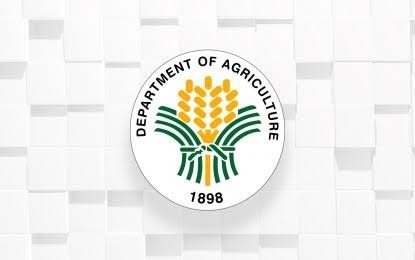[7.12] DA는 Calabarzon의 가난한 사람들에게 새로운 생계 기회를 열어줍니다.
컨텐츠 정보
- 20,970 조회
본문
LIPA CITY, Batangas – 농무부(DA)는 Calabarzon 지역에서 농업 및 어업 부문에 종사하는 5급 및 6급 시정촌 주민들, 특히 빈곤 수준 이하의 개인들에게 생계 기회를 확대하고 있습니다.
수요일 인터뷰에서 DA의 농업 개발 특별 구역(SAAD) 프로그램의 지역 대체 보조 담당자인 "Wilmer Faylon"은 자신의 사무실이 700명 이상의 농부를 등록했으며 현재 12개의 농부 및 어민 조합을 지원하고 있다고 말했습니다. 약 3-4개월의 기간 동안 협회(FCA).
DA의 SAAD 프로그램은 “소외된 필리핀 농부와 어민을 위한 생계 지원을 통해 빈곤 발생률 감소 및 지역 식량 생산 활성화에 본질적으로 기반을 두고 있습니다.”라고 Faylon은 덧붙였습니다.
SAAD는 올해 1월 Calabarzon에서 시작했지만 상대적으로 성과가 낮은 다른 지역에서는 8년 전에 시작되었습니다.
Calabarzon 지역은 경제 측면에서 높은 성과를 거두고 있다고 "Faylon"은 말했습니다.
“이 2단계에는 5급인 지방자치단체가 있기 때문에 포함됩니다. 기준 중 하나는 특히 농업 분야에서 우리 정부의 도움이 절실히 필요한 5급과 6급 지자체”라고 덧붙였다.
Quezon Agricultural Research and Experiment Station의 OIC-Chief인 "Faylon"은 그들이 도움을 주기 전에 먼저 해당 지역을 연구하기 위해 참여 농촌 평가(PRA)가 수행되는 사회적 준비를 먼저 수행했다고 말했습니다.
“PRA에서 그들은 그들이 제공할 수 있는 제품이나 투입물을 식별할 것입니다. 그들은 또한 문제와 해결책을 식별할 것이므로 우리 프로젝트의 성공률이 높을 가능성이 있습니다. 그것이 그들이 알고 있는 것이고, 그것이 존재하며 그들이 그곳에서 채택한 것입니다.”라고 그는 말했습니다.
"Faylon"은 다른 DA 프로그램과 정부 기관도 이미 SAAD에 의해 잘 문서화되었기 때문에 PRA에서 수집된 데이터를 사용할 수 있다고 공유했습니다.
그에 따르면 이 지역의 5급 지자체는 Quezon 주에 8개, Batangas에 4개, Laguna에 4개, Cavite에 1개가 포함됩니다.
올해 SAAD는 Batangas의 Tingloy 시와 Quezon 지방의 Alabat, Perez 및 Quezon 마을을 대상으로 합니다.
Faylon은 "지금 당장은 SAAD의 도움을 받은 사람들의 수가 2분기에 불과하지만 이미 목표를 초과하고 있습니다."라고 말했습니다.
한편 그는 "도로가 어렵거나 도로가 전혀 없고 물도 없고 전기도 없고 여러분의 의견을 전달하기 어려운 상황 때문에" 외딴 지방자치단체에 도달하는 데 어려움을 표현했습니다.
"SAAD는 우리가 지리적으로 불우하다고 부르는 곳에 여전히 많은 사람들이 있다는 것을 저에게 눈을 뜨게 할 수 있는 것입니다." "Faylon"이 말했습니다. (PNA)
This is the Original Article from PNA NEWS
[7.12] DA opens new livelihood opportunities to Calabarzon's poor
LIPA CITY, Batangas – The Department of Agriculture (DA) is extending livelihood opportunities to the residents of 5th- and 6th-class municipalities engage in the agriculture and fishery sectors, especially to individuals below the poverty level, in the Calabarzon region.
In an interview on Wednesday, "Wilmer Faylon," the DA’s regional alternate assistant focal person for the Special Area for Agricultural Development (SAAD) program, said his office has registered more than 700 farmers and is currently assisting 12 farmers' and fishers’ cooperatives and associations (FCAs) in a span of about three or four months.
DA’s SAAD Program is “essentially anchored in poverty incidence reduction and local food production activation, through livelihood assistance for marginalized Filipino farmers and fishers,” Faylon added.
The SAAD started in Calabarzon in January this year but began eight years ago in other regions with relatively low performance.
Calabarzon region has high performance in terms of economy, "Faylon" said.
“In this 2nd phase, we are included because there are municipalities that are 5th class. One of the criteria is the 5th and 6th class municipalities that really need help from our government, especially in the field of farming,” he added.
"Faylon," also the OIC-Chief of the Quezon Agricultural Research and Experiment Station, said they first conducted social preparation where participatory rural appraisal (PRA) is done to study the area first before they give help.
“At PRA, they will identify what product or input they can provide. They will also identify the problem and solution, so chances are that the success rate of our project will be high. That is what they know, that is existing and that is what they adopted there,” he said.
"Faylon" shared that other DA programs and government agencies may also use the data gathered in the PRA since it has already been well-documented by SAAD.
According to him, the 5th class municipalities in the region include eight in the province of Quezon, four in Batangas, four in Laguna, and one in Cavite.
This year, SAAD targets the municipality of Tingloy in Batangas and the towns of Alabat, Perez, and Quezon in Quezon province.
“Right now, the number of people who have been helped by our SAAD is already exceeding the target even though we are only in the 2nd quarter,” Faylon noted.
Meanwhile, he expressed the challenges in reaching the remote municipalities “because of the situation like the road is difficult or there is no road at all, no water, no electricity, and it is difficult to carry your input.”
“SAAD is what we can call an eye-opener for me that there are still many out there in what we call geographically disadvantaged,” "Faylon" said. (PNA)
관련자료
-
이전
-
다음


